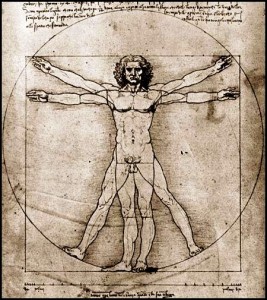 There are currently over 150,000 different books on leadership listed on Amazon.com, each supposedly, with a unique message. My desire is to capture the essence of leadership in this short article from what I have studied and observed in my 35 years of leadership experience.
There are currently over 150,000 different books on leadership listed on Amazon.com, each supposedly, with a unique message. My desire is to capture the essence of leadership in this short article from what I have studied and observed in my 35 years of leadership experience.
The method I have chosen is to describe the essential attributes of leadership – the anatomy of a leader. The body has twelve unique systems necessary to keep it alive including the muscular, endocrine and respiratory systems, among others. In order to keep this simple, I will focus on the following four essential systems and corresponding attributes in the anatomy of a leader:
- Nervous system or Intelligence
- Skeletal system or Systems Thinker
- Digestive system or Business Acumen
- Cardiovascular system or Inspiration
Each of the body systems must function well in order to sustain life. Likewise an effective leader must possess each of the qualities mentioned if he/she is to be effective in keeping the organization alive. Leaders who have only developed some of the systems will fail. They might not get fired but their success will be dramatically diminished, their employees will suffer and the organization will be less successful.
The man who was known as “The Wizard of Westwood” is a good example of someone who had the anatomy of a leader. Coach John Wooden had the intelligence and a coaching system that produced 10 NCAA basketball championships. He must have had business acumen because he was able to keep the basketball arena at UCLA filled with paying fans from 1948 to 1975. He inspired many great basketball players including Bill Walton and Kareem Abdul-Jabbar with sayings such as, “A coach is someone who can give correction without causing resentment.”
The following four systems must be in your leadership anatomy if you want to be like Coach John Wooden or any other successful leader.
1. Nervous system – Intelligence
The nervous system has three general functions: a sensory function, an interpretative function and a motor function. Sensory nerves gather information from inside and outside of the body. The nerves then carry the information to central nervous system (CNS) where it is processed and interpreted in the brain. Motor nerves transmit the information from the CNS to the muscles and the glands of the body.
The ability to gather, analyze and act on data is absolutely essential for a leader. This does not require a high IQ or a college degree. Even the leader of a team of ditch diggers must be able to tap into his nervous system (Intelligence) in order to effectively lead ditch diggers. Many very successful leaders are not the most intelligent people in the organization, but they are able to use their intelligence to produce a result that is satisfactory to their customers and beneficial to their organization.
I worked with a wonderful lady who climbed the ladder from a direct care staff position to management in a healthcare organization dominated by people who have advanced degrees. She capably supervises several hundred people now, without having a college degree. She used her ability to analyze the patients’ needs and then organize others to meet those needs.
She saw that her employees needed more training, so she developed a sophisticated formal training program. She saw that it was difficult to recruit employees for this difficult job, so she established a mutually beneficial relationship with trade schools. She saw an unreasonably high turnover rate, so she worked with management to increase the pay and social standing of her employees within the company. She is an example of someone who has the nervous system of a leader.
2. Skeletal system – Systems Thinker
The skeletal system gives the body its basic framework, providing structure, protection, and movement. The 206 bones in the body also produce blood cells, store important minerals, and release hormones necessary to life.
Every organization must have a structure – the way that things get done. Even the kid who is selling hot dogs at the county fair has a process for providing that hot dog. A leader is the person in the organization that understands how the product or service is delivered. He/she is also the one who is constantly improving the system and helping others to see how they fit in the structure.
The way that things get done is usually called processes or systems. For example, the kid selling hot dogs is not just handing you food and taking your money. There is so much more. He has to have processes or systems to buy the hot dogs, buns and everything else. Transport them to the cooking location. Cook them so they taste good and comply with state health regulations. Prepare the dog so it is ready to eat when you want it. Take your grimy money and not contaminate your food, etc, etc, etc.
Every organization has processes and systems, some better than others. As the guru of quality, Edward Deming said, “Put a good person in a bad system and the bad system wins, no contest.” A leader must be a systems thinker who can see the flaws in the system and work to eliminate them so they don’t defeat the good employees.
I am a Certified Examiner for the California Award for Performance Excellence (CAPE). As such, I was privileged to do a site assessment on a very large health care system in California. I was able to see how this organization had created a structure that was understandable and functional. Patients and employees alike appreciated the highly functional processes and systems. The leaders in that organization are systems thinkers and they created a strong skeletal system.
3. Digestive system – Business Acumen
The digestive system is uniquely constructed to perform its specialized function of turning food into the energy you need to survive and packaging the residue for waste disposal.
The food for every organization is money, including non-profit organizations. Without money, the organization dies very quickly. Business acumen is the ability to turn enough money into energy with as little waste as possible. Leaders must understand that no matter how dedicated the organization is to altruism or creativity, revenue must always exceed expenditures.
Business acumen is the litmus test for leaders in any organization. If the money is not available when payroll is due, the business closes its doors. Being a CPA myself, I have rubbed shoulders with hundreds of leaders with business acumen. The biggest problem for many of the leaders with business acumen is that they focus too much on cost cutting (waste) and too little on revenue enhancement (energy). Some are so miserly that they routinely miss opportunities for business growth. Still, the digestive system of these leaders is functional.
Thankfully, you don’t have to be a bean-counter to have business acumen. A leader knows when his/her business acumen needs to be supplemented. A wise leader will find those who have been specifically trained in business to ferret out the financial facts. The digestive system of the leader can be optimized by consulting with qualified accounting professionals, such as your CPA, your CFO or your controller.
4. Cardiovascular system – Inspiration
The purpose of the cardiovascular system is to transport oxygen to all of the tissues in the body and remove waste products. The system itself consists of blood, blood vessels and, of course, the heart.
As a heart transplant recipient, I have an affinity for things of the heart. A leader’s ability to transport needed direction and motivation to the workforce, just as the cardiovascular system transports essential oxygen to all the body tissues, is the most important and least celebrated attribute of a leader. Leaders nourish the workforce. I know firsthand the debilitating effect of not getting enough oxygen. A good leader will not deny his/her employees the nourishment they need to be most productive.
Maya Angelou shared this gem of wisdom, “I’ve learned that people will forget what you said, people will forget what you did, but people will never forget how you made them feel.” When employees know that the boss values them as people, businesses flourish.
I am grateful for the inspirational leaders for whom I have worked. Most bosses do not fit into the category of inspirational, even if they have the other three essential attributes.
The boss that inspired me the most made it clear from the beginning that we were a team. He was the CEO and I was his CFO in an industry that was unfamiliar to me. He consulted with me on all significant issues and he valued my opinion. We didn’t always agree but there was never a conflict because of mutual respect. When he left the organization five years later, I was able to take over as the CEO because he had prepared me so well. I will always be grateful for his inspirational leadership. He is a Persuasive Leader with a well-developed cardiovascular system.
In summary, the essence of leadership is that leadership requires multiple interdependent systems, just as does the human body. The anatomy of a leader includes these four essential systems.
- Intelligence to correctly gather, analyze and act on data.
- A systems thinker who understands the business system well enough to see the strengths and weaknesses of the system and then works to refine them.
- The business acumen – the ability to turn money into energy with as little waste as possible – so the organization can prosper. Or the wisdom to tap into others who have that acumen.
- Inspiration to provide needed direction and motivation to the workforce in a way that makes them feel valued.
Those who have the anatomy of leader provide life to the organizations they lead just as the systems of the human body provide life to us as individuals.

